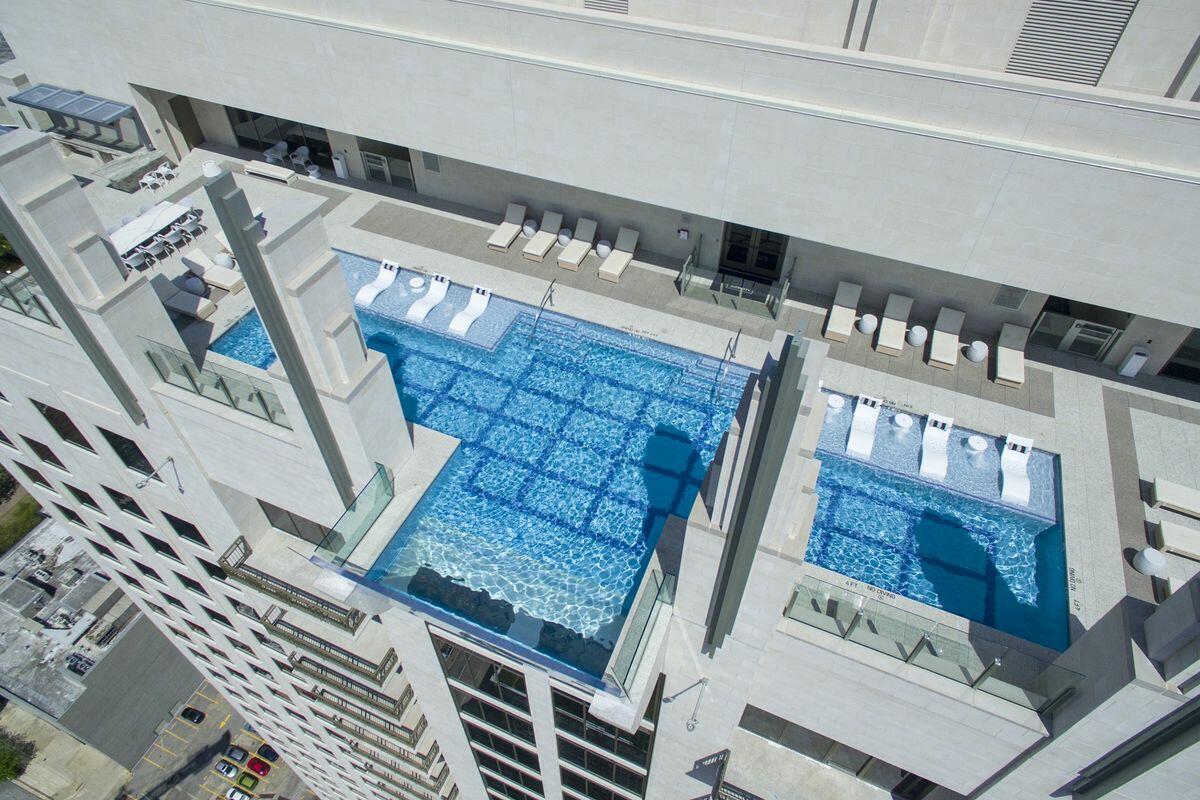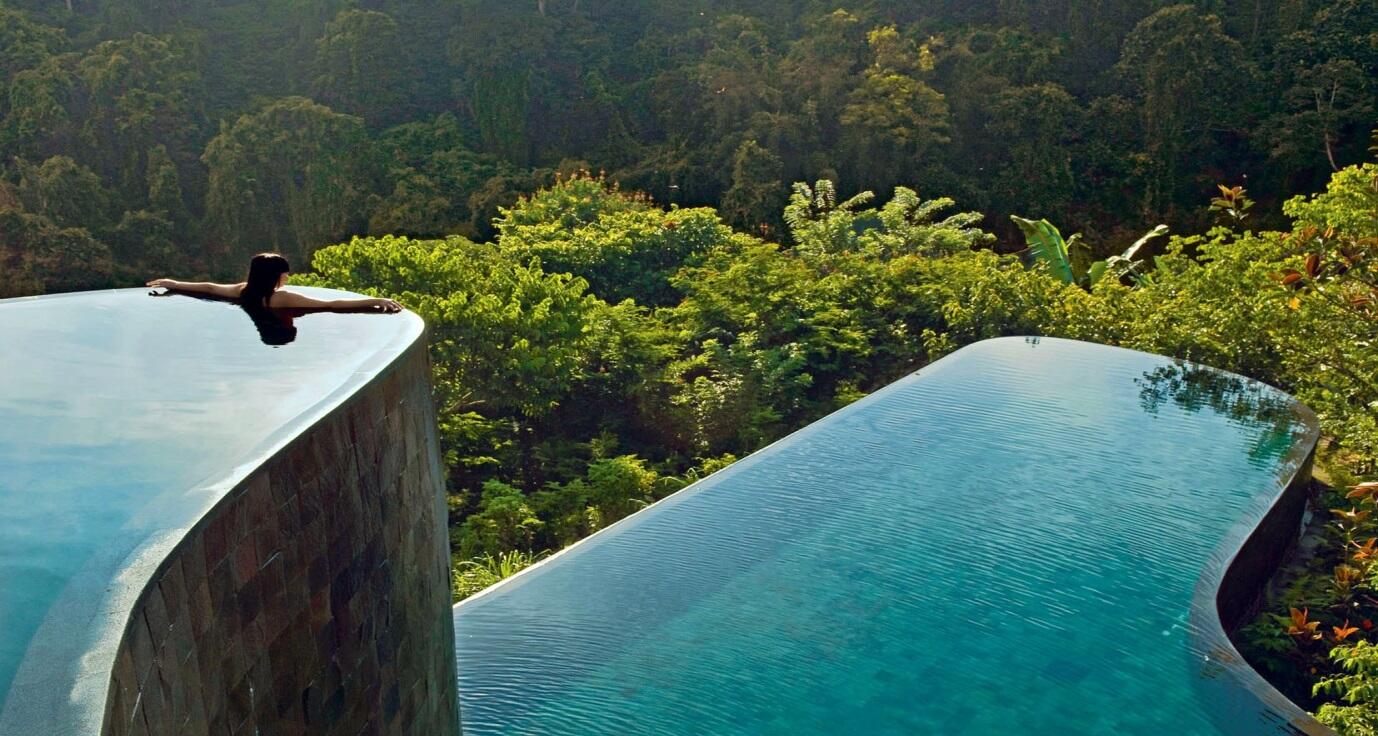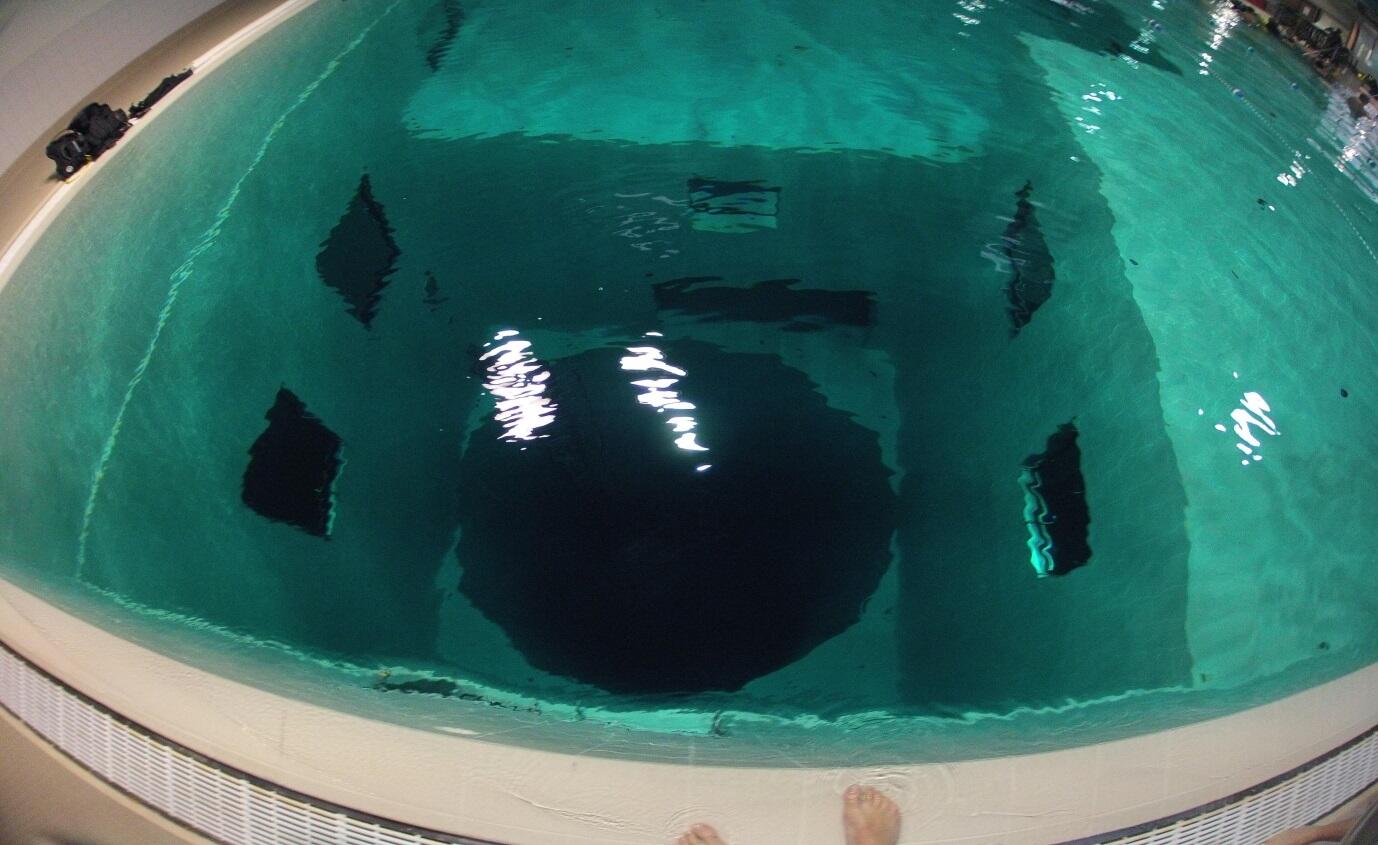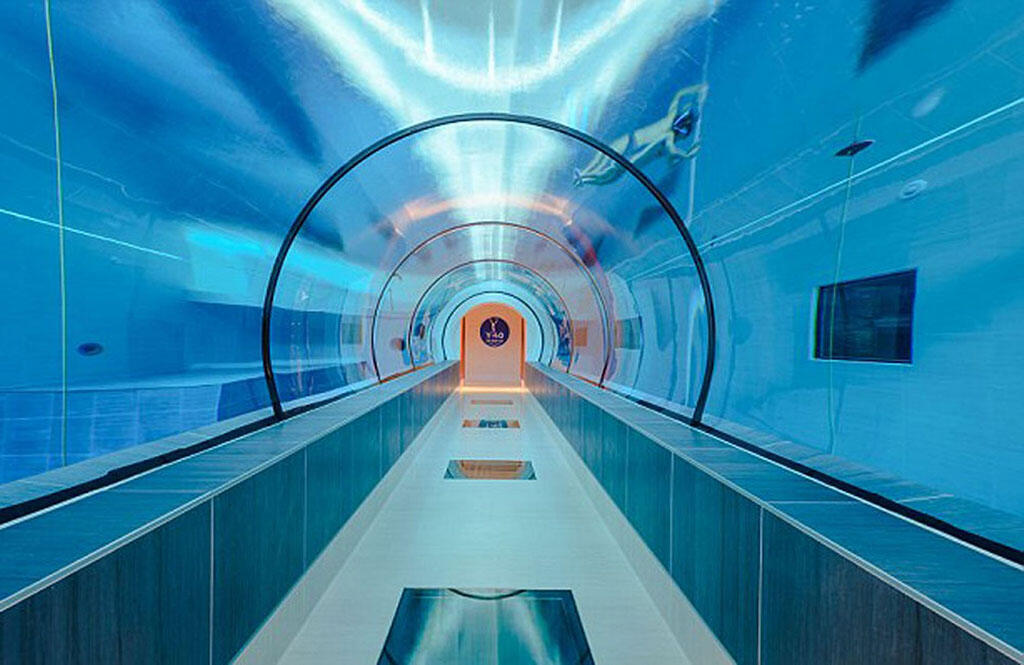Nowadays, modern technologies allow the majority of people to have easy access to water resources every day and at any time. However, water resources could not be easily accessed in the past. To get control of the water, people had to invent special techniques that would ensure its comfortable utilization. One of these techniques was the creation of swimming pools, special structures that hold the water and can be used for swimming and leisurely activities.
While the first pools were created for bathing and religious purposes, nowadays, having a swimming pool as an element of backyard décor is an indication of the wellness of landlords. In this case, the swimming pool is considered not only as a place for leisurely activities but also as a symbol of social status. The more beautiful and bigger the swimming pool is, the wealthier and powerful its owner. Therefore, mastering the construction of swimming pools, aimed to improve their aesthetics, plays a significant role in defining the social status of the swimming pools’ owners. In this essay, the process of domestication of water with a primary focus on swimming pools will be discussed.
It is well known that water is an essential element for the survival of human beings. For this reason, in ancient times, people had to settle down on the territories that were close to freshwater sources. It was especially crucial for dryland regions as people needed to irrigate their lands to plant vegetables, fruits, and crops. The process of water collection was complicated, as humans had to carry heavy natural containers with water from wells or rivers to their settlements.
Over the years, people have been implementing certain strategies and measures to make the process of accessing water sources easier. For example, the first irrigation system was created in Egypt in about 5000 B.C. Ancient Egyptians built large basins on the banks of the Nile River. During the floods, the water was diverted to these basins and stored there. Later, this technique was improved as people started building connections between basins and canals of different sizes to transfer the water to various places.
It is worth to notice that even though water is an essential element that is needed for human existence, it can also have a negative impact on people’s lives. For instance, floods can result in the destruction of houses and crops, which can deteriorate living conditions and cause a food shortage. There are various ways to deal with the destructive nature of water. For example, the Babylonians and Mesopotamians invented specialized drainage systems, which implied using terracotta pipes to “convey stormwater out of their settlements.”
Nowadays, people have more opportunities to reduce the risks of floods. Thus, they build the dams next to the rivers to save the inhabitants of the nearby areas in case if the water levels increase. In addition, they use modern technologies that help to predict floods and warn those who are in the risk zones using specialized information tools, such as Global Flood Awareness System. Therefore, even though the process of water control is challenging, people have been creating successful strategies to manage water sources since ancient times.
The utilization of modern technologies and centuries-old experience of managing water sources help people achieve various goals. Thus, at the present time, the majority of people have access to tap water, which enables them to wash or cook anytime. Drain systems help to get rid of sewage while cleaning of the roads is the primary function of special machines, which are usually called “Street cleaners.” Getting control of the water also enabled people to invent fountain constructions, which serve as the beautiful decorations of the cities in summertime. One of the most luxurious and gorgeous architectural inventions, which was created as a result of managing water sources by people, is the swimming pool.
There is no precise information about the time when the first swimming pools were built. However, it is generally accepted by scholars that the first swimming pool was constructed about 2600 B.C.E. in modern-day Pakistan. It was called the Great Bath of Mohenjodaro and used for religious purposes. Later, in ancient Rome and Greece, people started establishing special holes for bathing, which were the predecessors of the larger pools constructed as washing facilities during the Classical period. The first pools that emerged as compositions of art and played a vital role in the infrastructure of cities appeared in Rome. For example, the Baths of Diocletian, built around 306 A.D., included a library, shops, and even restaurants. These bathes contributed to the improvement of public health and public relations.
These bathing constructions served as prototypes for bathing pavilions, which became especially popular on the territory of the Middle East and the Mediterranean much later, in the 19th century. Their architectural structure since that time, however, has undergone many changes. For example, in Tunisia, bathing pavilions looked like luxury decorated places. Usually, these structures were connected with a palace and were open only for the elite, the ruling families, and wealthy people. The swimming pool located at the center of bathing pavilions, which were set in the seawater, so it could enter the building freely and people could enjoy bathing in privacy.
Spending time at bathing pavilions facilitated the emergence of swimming pools as places for social interaction and leisurely activities. Thus, the bathing pavilions of the Mediterranean and the Middle East region witnessed the gathering of representatives of members of ruling families, their friends, and relatives. During the summertime, they used to move to their residencies located on the banks of the Mediterranean Sea, and invite their relatives and friends to spend the summer together. It is worth to notice that ruling families of the Mediterranean region used to invite guests from Europe. They picked up the habit to spend time in bathing pavilions and started traveling to the region more often for bathing purposes. The owners of pavilions provided food and even invented pool games to entertain their guests.
Moreover, bathing at the swimming pools with sea water impacted people’s health in a positive way. Therefore, at that time, swimming in the bathing pavilions was considered as both leisurely activity and treatment therapies. Owning bathing pavilions demonstrated the high social status of the landlords. Swimming there was considered a pleasurable activity that could be afforded by wealthy people.
Swimming at the swimming pools emerged as a sports activity in the 19th century. The first indoor swimming pool, called St. George’s Baths, was opened to the public in the first half of the 19th century in Great Britain. Later, this pool, along with the other pools that were opened in Great Britain, held the first swimming competitions in the 1830s. Recreational and competitive swimming became especially popular in the second half of the twentieth century.
It was ensured by various municipal and informal programs of pool buildings launched in order to provide the public with an opportunity to use swimming as a form of recreation. Therefore, by the end of the twentieth century, swimming pools became an essential part of people’s lives, as it served as a place for social interactions, sports competitions, and leisurely activities.
Nowadays, the swimming pools are completely different from their first prototypes. They are equipped with various modern systems that enable people enjoying swimming at any time of the year in comfortable conditions. Thus, scientists suggest new heating methods for both indoors and outdoors swimming pools. They include using solar-assisted, compression, absorption, and motor drive heat pumps, which help to heat the water until its temperature becomes comfortable for swimming. Also, various ventilation techniques are implemented in order to dehumidify indoor pools.
In addition, different sanitation means are introduced in order to prevent catching bacterial diseases by people in public swimming pools. These sanitation techniques include not only adding chemicals to the water but also using ceramic and polymer membranes that do not impact people’s health negatively. While there are many technological innovations implemented in the construction of the latest swimming pools, many changes occurred in terms of their architectural appearance.
Currently, aesthetics plays a significant role in the construction of swimming pools because many people consider having a swimming pool as an indication of their success and status. Therefore, a large and beautiful modernized swimming pool is considered a luxury possession, which promotes the improvement of the social status of its owners. Similar perception can be noticed in the hospitality industry when luxury 5-star hotels advertise their commodities presenting the spa-designed swimming pools on their territories. For this reason, there are many architecturally unique swimming pools that were created in order to attract the attention of the public and strengthen the status of the owners.
For instance, there is the largest rooftop swimming pool in the world, which is located in Singapore and called “The Infinity Pool.” The 150-meter long swimming pool was constructed on the 57th store of the hotel “Marina Bay Sands” in order to open impeccable and breathtaking views of Singapore and beyond. The hotel was designed by an Israeli-Canadian architect, Moshe Safdie. It consists of three towers, which are connected at the top, where the Sands Sky Park with numerous restaurants, cafes, and the Infinity pool is located. The pool is unique not only because of its size and location but also because it has walls that exactly match its water level. They are overflowing, and water falls into a container, which is located below. The water is collected in this reservoir and is pumped back into the pool. See fig. 1 to enjoy the beauty of the described pool below.

Another example of modern architectural design of a swimming pool is located on the Market Square Tower in Houston, Texas. The pool was constructed in 2016 and designed by Texas company Jackson & Ryan Architects. The Market Square Tower is the tallest building of the state, which makes the architectural concept more interesting. It is one of the first swimming pools, which has a glass bottom. Therefore, the uniqueness of this swimming pool is that people can enjoy both the view on the skyline and the ground 40 stores below. Find the picture of the swimming pool under fig. 2.

Another unique and attractive architectural design of a swimming pool is represented by the Twin-Tiered Cascading Pool at Hanging Gardens in Bali, Indonesia. The pool is surrounded by the picturesque rainforests and the Ayung River and was awarded the title of the world’s best swimming pool.
The architectural uniqueness of this pool is that the architects managed to build a stable structure, which hangs over the jungle valley using innovative feats of engineering. Thus, all the levels of the pool are aligned, which is a great architectural challenge, because the steps are needed to raise the villa from the ground level. It is very important as it prevents water from flowing indoors. The architects found a great decision, which, however, remains the most guarded secret of Hanging Gardens. Find fig. 3 to see the picture of the Hanging Gardens pool below.

Another example of a swimming pool with a unique design is a pool called “Nemo 33,” which was built in 2004 and located in Brussels, Belgium. This swimming pool reminds an art installation rather than a casual place for swimming. “Nemo 33” is one of the deepest indoor swimming pools in the world with a depth of 108 feet. Seven years were spent to construct this pool and various channels, caves, and courses inside of it to provide a training area for divers. The author of the project was a famous diver, John Beernaerts. Until 2014, “Nemo 33” was the deepest swimming pool in the world. However, this status was taken by the swimming pool built in Italy, which is called “The Deep Joy.” The depth of “The Deep Joy” is 40 meters (113 feet), and it is located in the swim center, designed by an Italian architect, Emanuele Boaretto. It is a true masterpiece of architecture and engineering, which takes place in the Guinness World Record. Fig. 4 and fig. 5 demonstrate the two deepest swimming pools in the world.


Thus, the demonstrated pictures, as well as the information about the architectural masterpieces presented above, prove that swimming pools serve not only as places for swimming and social interaction. It is also considered as an indication of the social status of people and various companies. Thus, spending time in the world’s best swimming pool in Bali in the majority of cases is available only for people with relatively high annual income. Similarly, the construction of a modernized luxury pool in the backyard cannot be performed without substantial financial investments.
Due to financial reasons, the majority of people in the USA decided not to have a swimming pool in their backyards. According to statistics, for the period from 2009 until 2017, the number of those who had swimming pools in their households declined from 28.4 million to 18.9. Except for the main expenses that are related to the building of the pools, the significant financial contributions are made for their maintenance. These contributions include energy cost, extra insurance cost that covers insurance accidents, as well as costs related to its sanitation and cleaning. As a result, owning a swimming pool results in substantial expenses that most people cannot afford. Therefore, a resort-style pool located next to the house demonstrates the financial viability and high social status of the owners.
Indeed, swimming pools serve as status symbols not only in real life but also in the film industry. Thus, in the movie “Sunset Boulevard,” the pool plays a central role as it stands for extravagance and glamour. Owning a pool represented fame and fortune and became a dream of many people in the 1950s. Similarly, the desire of the main hero of the movie “The Pool” to swim in the pool of the hotel where he worked, symbolized his life goals, which implied economic advancement. A swimming pool can symbolize not only economic independence and the high social status of its owners but give a sense of freedom and an opportunity to escape from the daily routine.
However, Wilkinson asserts that even though swimming pools give a sense of freedom, they have their dark side as well. The author narrates about the time in the history of pools when co-bathing was banned due to the racist prejudices. Thus, he reminds us that in the past, the fear of water contamination caused by swimming of black people in pools “lead to the post-desegregation boom in backyard pools.”
Nowadays, these ideas are no longer popular as it is well known that water contamination is caused due to other reasons. Thus, it can be caused by the social irresponsibility of people who have some contagious diseases and still attend public swimming pools. Unfortunately, there are no sanitation methods that allow purifying water from all the bacteria and infections without impacting people’s health negatively. Also, water contamination may be caused by bacteria that come from saliva, swimwear, hairs, and even cosmetics of swimmers.
Therefore, it can be concluded that people’s efforts to get control of the water brought a number of positive results. Thus, currently, humans invented numerous modern techniques that allowed them to have easy access to water in the majority of countries. In addition, people managed to reduce the negative impact of floods and storms. Getting control of water resulted in the creation of numerous tools that aimed to provide more comfortable conditions for the utilization of water sources. One of these tools is swimming pools, which initially served as reservoirs for holding water for irrigation purposes. Later, the holes filled with water served as bathes for ablutions, which should be performed by religious people. These water holes became prototypes of the modern swimming pools.
Having passed a centuries-long process of development, modern swimming pools became equipped with many technological tools that make the process of swimming comfortable and enjoyable. Moreover, now, pools are used not only for swimming but also for social and recreational spaces. Also, a swimming pool serves as a symbol of the social status of its owners because a luxurious pool demonstrates that the owners have enough financial means for its maintenance. It is especially important for the owners of the luxurious hotels who consider their swimming pools as one of the tools for the attraction of guests. Therefore, mastering the construction of swimming pools in order to improve their aesthetics plays a significant role as it defines the social status of the swimming pools’ owners.
Works Cited
Ahmed, Astaaq. “Nemo 33: Swimming Pool with Oceanic and Underwater Cave Simulations.” Ststwmedia. 2019. Web.
“Architecture of Marina Bay Sands.” Marinabaysands. 2019. Web.
Bellis, Mary. “The History of Swimming Pools.” Thoughtco. 2019. Web.
Chaline, Eric. Strokes of Genius: A History of Swimming. Reaction Books, 2017.
Charlesworth, Susanne, et al. “The History of Sustainable Drainage.” Geophysical Research Abstracts, vol. 20, 2018, p. 1484.
Clancy-Smith, Julia. Mediterraneans: North Africa and Europe in an Age of Migration, C. 1800-1900. University of California Press, 2011.
Dudziak, Mariusz, et al. “Application of Ultrafiltration in a Swimming Pool Water Treatment System.” Membranes, vol. 9 (3), no. 44, 2019, pp. 1-11.
Elldregde, Barbara.“Sky Pool at New Houston High-Rise Hangs 500 Feet above Ground.” Curbed. 2017. Web.
Hamada, Youssef. The Grand Agriculture Renaissance Dam, its Impact on Egyptian Agriculture and the Potential for Alleviating Water Scarcity. Springer, 2017.
“Hanging Gardens Ubud.” Uniqhotels. Web.
Howarth, Dan. “Glass-Bottomed Sky Pool Suspends Swimmers 500 Feet above Houston.” Dezeen. 2017. Web.
“Infinity Pool.” Marinabaysands. Web.
Jimenez, Silvio, et al. “Swimming Pool Heating Systems: A Review of Applied Models.” Tecciencia, vol. 10, no. 19, 2015, pp. 17-26.
McCallum, Ian, et al. “Technologies to Support Community Flood Disaster Risk Reduction.” International Journal of Disaster Risk Science, vol. 7, no. 2, 2016, pp. 198-204.
McLauchlan, Anna. “Geographies of Swimming Pool Provision: Lessons from Glasgow 1804-2014.” Scottish Geographical Journal, vol. 133, no. 2, 2017, pp. 83-100.
Moor, Ashley. “20 Most Insane Swimming Pools in the World: Man-Made Instagram Paradises.” Bestlifeonline. 2018. Web.
Neild, Barry. “Plunge into World’s Deepest Swimming Pool.” CNN. 2014. Web.
O’Connell, Brian. “Pros and Cons of Buying a Home with a Pool.” Thestreet. 2018. Web.
Scholes, Lucy. “Beneath the Surface: The “Hidden Depth” of Swimming Pools.” BBC, 2015. Web.
Souza, Eduardo. “Infinity Pools in 15 Architecture Projects.” Archdaily. 2019. Web.
“The Architecture of Hanging Gardens of Bali.” Hanginggardensofbali. Web.
“What are the Deepest Swimming Pools in the World?” Sportmydive. 2017. Web.
Wilkinson, Tom. “Typology: Swimming Pools.” The Architectural Review, vol. 1422, 2015, p. 30.
Wolman, Ori, et al. “Technology Assessment: The Evaluation of Residential Pool Sanitation Options Using TOPSIS.” Infrastructure and Technology Management. Innovation, Technology, and Knowledge Management, edited by Daim T., Chan L., Estep, J., 2018, pp. 437-446.
Yegul, Fikret. “Roman Baths at Isthmia and Sanctuary Baths in Greece.” Hesperia Supplements, vol. 48, 2015, pp. 247-269.